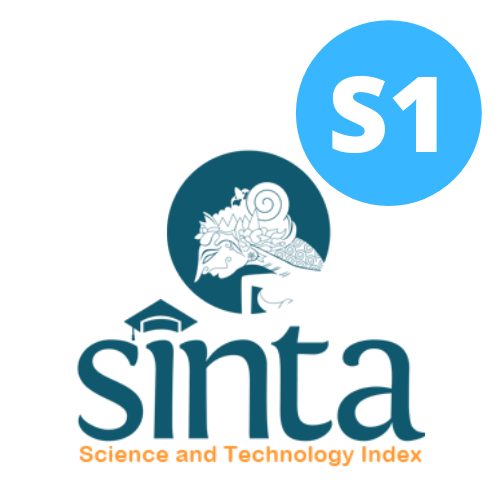Implementation of Health BPJS Usage in Stunting Toddler Management at Stunting Locus
Implementasi Penggunaan BPJS Kesehatan dalam Penanganan Balita Stunting di Lokus Stunting

Downloads
Background: Community-based health insurance is increasingly integrated into the Indonesia health system. Health protection is one of the dimensions in the Special Index for Stunting Management (IKPS). The Indonesia National Health Insurance, regulated by Social Health Insurance Administration (BPJS Health), has stunting handling programs. Stunting is less likely to occur in toddlers who have health insurance.
Objectives: To explore the use of by BPJS Health for handling stunting in the stunting locus area.
Methods: Qualitative research using a case study was conducted in the Wori Primary Health Service. Snowball sampling methods and recruit 9 participants: health service and village staff, a mother with a stunting toddler, and cadres. All interviews, were audio-recorded and transcribed verbatim. Thematic analysis was used to and using OpenCode software.
Results: Even though there was local health insurance, the regional government kept supporting BPJS Health ownership for stunting toddlers. They get referral services to pediatricians for further screening, but this cannot be carried out due to the low ownership of by BPJS Health. The determining variables were the absence of a toddler's National Identity Number, the drawn-out procedure, and the mother's perception of the risk of stunting. Because of the lower knowledge barrier and accessibility to other healthcare facilities, they thought it was sufficient to treat stunting at the Primary Health Service level.
Conclusions: The benefits of BPJS may be seen in the stunting handling program at the Wori Primary Health Service, however, there is a need for coordination of various components to inform it.
WHO. Childhood Stunting: Context, Causes and Consequences WHO Conceptual Framework. https://www.who.int/nutrition/events/2013_ChildhoodStunting_colloquium_14Oct_ConceptualFramework_colour.pdf vol. 9 27–45 (2013).
de Onis, M. & Branca, F. Childhood stunting: A global perspective. Matern Child Nutr 12, 12–26 (2016).
Badan Penelitian dan Pengembangan Kesehatan. Riset Kesehatan Dasar Indonesia Tahun 2018. (2018).
Badan Kebijakan dan Pembangunan Kesehatan. Buku Saku Hasil Survei Status Gizi Indonesia (SSGI) 2022. (2022).
UNICEF & WHO. Levels and trends in child malnutrition. in https://www.who.int/publications/i/item/jme-2020-edition vol. 24 51–78 (2020).
Badan Pusat Statistik. Laporan Indeks Khusus Penanganan Stunting 2019-2020. (2020).
Kofinti, R. E. , K. I. , P. J. A. , & A. E. K. Reducing children's malnutrition by increasing mothers' health insurance coverage: A focus on stunting and underweight across 32 sub-Saharan African countries. Econ Model (2022).
Liu, K. Insuring against health shocks: Health insurance and household choices. J Health Econ 46, 16–32 (2016).
Erlyn, P., Hidayat, B., Fatoni, A. & Saksono, H. Nutritional Interventions by Local Governments as an Effort to Accelerate Stunting Reduction. Jurnal Bina Praja 13, 543–553 (2021).
Nshakira-Rukundo, E., Chanie Mussa, E., Gerber, N. & von Braun, J. Impact of Community-Based Health Insurance on Child Health Outcomes: Evidence on Stunting from Rural Uganda. https://ssrn.com/abstract=3315201 (2019).
Kemenkes RI. Hasil Pemantauan Status Gizi (PSG) Balita Tahun 2017. www.kesmas.kemkes.go.id file:///E:/jurnal skripsi/mau di print/referensi/Buku-Saku-Nasional-PSG-2017_975.pdf%0D (2017).
Pemprov Sulut, P. P. S. U. Penetapan Hasil Kinerja Kabupaten Lokus Dalam Penanganan Konvergesi Stunting Terintergrasi Di Provinsi Sulawesi Utara Tahun 2020. (2020).
Badan Pusat Statistik. Persentase Penduduk yang Mempunyai Jaminan Kesehatan Menurut Kabupaten/Kota dan Jenis Iuran di Provinsi Sulawesi Utara. (2021).
Puskesmas Wori. Data Kepemilikan BPJS Pasien Puskesmas Wori. (2023).
Probohastuti, N. F., Rengga, D. A. & Si, M. Implementasi kebijakan intervensi gizi sensitif penurunan stunting di Kabupaten Blora. Journal Of Public Policy And Management 8, 1–16 (2019).
Intan Tarlina Azahra, Dedah Ningrum & Dewi Dolifah. Hubungan antara Pengetahuan dengan Kepemilikan dalam Pemanfaatan BPJS Kesehatan pada Ibu Balita Stunting. Jurnal Universitas Pahlawan 7, (2023).
Badan Penyelenggara Jaminan Sosial. Panduan Layanan Bagi Peserta Jaminan Kesehatan NasionalKartu Indonesia Sehat (JKN-KIS). (2020).
Ayu Riestiyowati, M., Zul Azhri Rustam, M. & Tinggi Ilmu Kesehatan Hang Tuah Surabay, S. National Health Insurance Ownership and Utilization with Stunting in West Sulawesi 2021: An Overview of Recent Evidence. Int. J. Mgmt. Hum. Sci vol. 6 (2022) www.ijmhs.org.
Fatimah, S. & Indrawati, F. Faktor Pemanfaatan Pelayanan Kesehatan di Puskesmas. Higeia Journal of Public Health Research and Development 3, 121–131 (2019).
Irawati Indrianingruma & Indah Puspitasarib. Evaluasi Proses Sistem Rujukan Badan Penyelenggara Jaminan Kesehatan Sosial (Bpjs) Kesehatan Di Fasilitas Kesehatan Tingkat Pertama (Fktp) Kabupaten Jepara. Jurnal Ilmu Keperawatan dan Kebidanan 13, 78–80 (2021).
Pertiwi, M., Nurcahyanto, H., Profesor, J. & Soedarto, H. Efektivitas Program BPJS Kesehatan di Kota Semarang (Studi Kasus pada Pasien Pengguna Jasa BPJS Kesehatan di Puskesmas Srondol). Journal Of Public Policy And Management Review 6, 1–14 (2017).
Arifiana Nur Anjani. Peran Pemerintah Desa dalam Pelaksanaan Program Jaminan Kesehatan Nasional (Studi di Desa Mojogedang, Kecamatan Mojogedang, Kabupaten Karanganyar). (Universitas Katolik Soegijapranata, 2020).
Yogaswara, D., Mulyani, S. & Yuni, S. M. Health Insurance And Family Income Stunting Toddlers in Sukamulya Village. Jurnal Kesehatan Masyarakat 6, 2021 (2022).
Copyright (c) 2024 Amerta Nutrition

This work is licensed under a Creative Commons Attribution-ShareAlike 4.0 International License.
AMERTA NUTR by Unair is licensed under a Creative Commons Attribution-ShareAlike 4.0 International License.
1. The journal allows the author to hold the copyright of the article without restrictions.
2. The journal allows the author(s) to retain publishing rights without restrictions
3. The legal formal aspect of journal publication accessibility refers to Creative Commons Attribution Share-Alike (CC BY-SA).
4. The Creative Commons Attribution Share-Alike (CC BY-SA) license allows re-distribution and re-use of a licensed work on the conditions that the creator is appropriately credited and that any derivative work is made available under "the same, similar or a compatible license”. Other than the conditions mentioned above, the editorial board is not responsible for copyright violation.












































